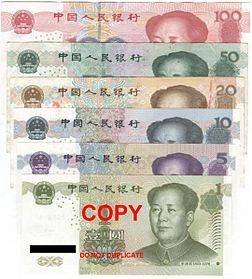Alt Investments
Greater China Private Equity, Venture Funds Still Drawing In Big Sums

Fewer funds completed fundraising last year than a year earlier suggesting that the tougher economic climate may have been a headwind. However, the financial totals for money raised were higher, figures showed.
A report showing a sharp fall in the number of Greater China-focused funds that completed fundraising last year – the lowest level since the financial crisis-hit year of 2009 – shows how Beijing’s harsh pandemic policies, and crackdowns on certain sectors, appear to have squeezed this activity in some respects.
Figures from research firm Preqin showed that a total of 260 Greater China-focused PEVC funds completed fundraising in 2021 – falling 37 per cent on the figure for 2020. Preqin worked with the Beijing Private Equity Association; its report looked at 75 fund managers and 210 funds.
Even so, despite significantly fewer funds being raised in 2021, they raised an aggregate of $74 billion, which is more than the 2020 total of $57 billion. Venture capital funds raised the most at $36 billion or 48 per cent of the total, followed by growth funds, which raised $24 billion, or 33 per cent of the total.
Unlike dollar funds, fundraising of renminbi funds continued to fall from their highs between 2016 and 2018, which saw the aggregate capital raised per year average over $100 billion. In 2021, 176 RMB funds raised $29 billion, or 37 per cent lower than 2020, reflecting the decreased demand from domestic investors.
Assets
The private equity and venture capital (PEVC) industries account
for $2 trillion of the $2.16 trillion total private capital
industry assets under management in Greater China (as of December
2021).
Venture capital AuM stood at $892 billion at the time, having grown by 81 per cent since December 2020.
As of December 2021, VC dry powder (unspent capital) reached $423 billion, equivalent to 19.5 per cent of private equity AuM.
“This indicates that fund managers still have funds to allocate. As valuation of risky assets normalises and LPs delay asset allocation (private equity accounts for a higher proportion of their overall portfolio), private equity fundraising may come under pressure in the next few quarters,” Preqin said.
Tracking policy direction
The report said that investors are trying to put money to work in
ways which Beijing policymakers want.
“The Chinese government favours sectors relating to core technologies, such as semiconductors, 5G applications, Internet of Things and autonomous driving. In the 14th Five-Year Plan, the Chinese government announced that, under the Made in China 2025 programme, it will also boost development in sectors including new materials, new energy, aerospace, biotechology, advanced manufacturing, and integrated circuits,” the report said. “ESG-related sectors will also be poised to do well, as China will require large amounts of private capital to achieve its ambitious goal of transitioning to a carbon-neutral economy by 2060.”
“Given the difficulties of going public and operating in the US, investors will also back domestic companies seeking regional expansion, while avoiding those with a long-term plan to expand into the US. These will be key growth sectors for potential investors, offering plenty of opportunities for deals in China’s PEVC industries. Challenges in IPOs may affect long-term investor confidence, but could also contribute to greater growth in China’s secondary buyout market,” it added.